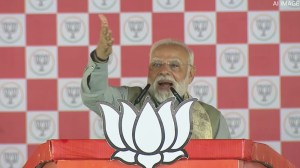Aftershock warnings
One of the urgent tasks of relief and rescue operations in Chamoli and Rudrapayag must be to take appropriate precautions against the aft...

One of the urgent tasks of relief and rescue operations in Chamoli and Rudrapayag must be to take appropriate precautions against the aftershocks of Monday night’s earthquake. Scientists from the Indian Meteorological Department have warned that tremors are likely to continue for the next two months and cause the collapse of weak structures such as are quite common in hilly regions.
It would be all too easy under the heavy strain of coping with the existing disaster to ignore warnings of imminent danger. The demands on the rescue operations are huge and include finding and rescuing people trapped in building debris and mudslides, tending to the injured, feeding and sheltering what may turn out to be thousands whose homes have been destroyed. Roads have to be cleared and communications restored.
Rehabilitating the victims will make large demands on the administration. But in the midst of all this, new dangers should not be forgotten. Chief Minister Kalyan Singh should give high priority to assessing therisk of more loss of life and make plans to relocate households and even whole villages, if necessary. That will be a huge operation in itself but nothing should be taken for granted in high earthquake-prone areas, designated Zone 5 regions.
Monday’s quake registering 6.9 on the Richter scale with its epicentre close to Chamoli town, was one of the severest of the many visited on this country. Although it was stronger than the Uttarkashi quake of 1991, the level of devastation may be lower because, according to scientists, the depth of focus was lower. Chamoli occurred at a depth of 30km, Uttarkashi at 15km.
Even so tremors were felt on Monday across five states of northern India, a phenomenon which indicates that in the geologically young region of the Himalayas the earth will shift in what are as yet very unpredictable ways. Inevitably, therefore, there will be heightened fears about the safety of the Tehri dam.
Although the wisdom of building a major a dam in a seismically dangerous area has alwaysbeen seriously questioned by some experts, others have pronounced the dam safe. But the problem will not go away. Uttarkashi and Chamoli have reopened the controversy and made it more urgent to get hard and final answers.
When it comes to natural calamities, scientific research can, by better predicting the when and where, help to alert society and some potential damage can be reduced. But natural calamities which cannot be averted altogether are compounded by man-made disasters which is what comes about under the reckless drive for more and bigger projects regardless of long-term risks. Leave alone the location of some dams and nuclear power projects which are questionable, even earthquake-proof building codes are either non-existent or flouted in cities in the country which fall across seismic fault lines.
After the wounds are healed and the damage repaired, Chamoli, Uttarkashi and Latur, to cite only the most recent earthquake-hit areas, should be revisited for the lessons they yield about thecountry’s often skewed development philosophy.







- 01
- 02
- 03
- 04
- 05
























